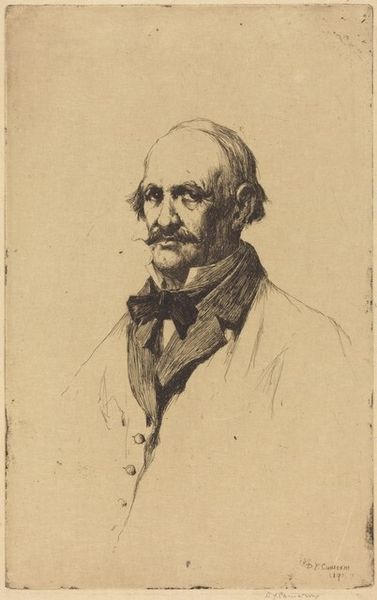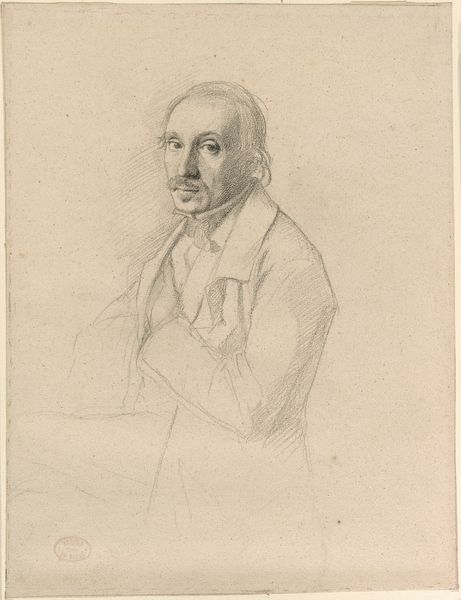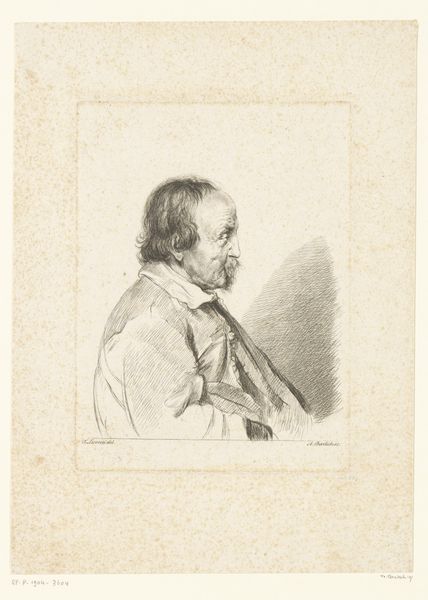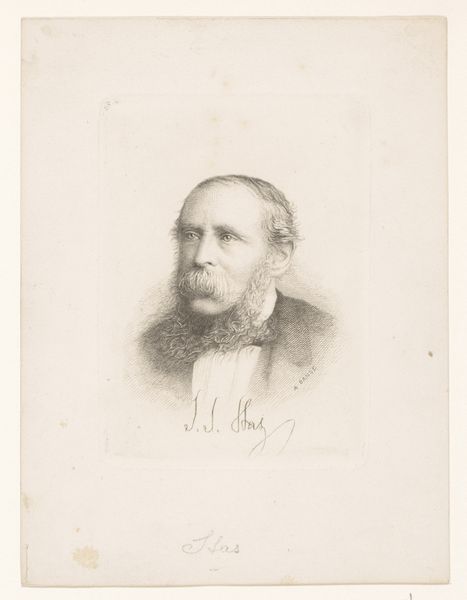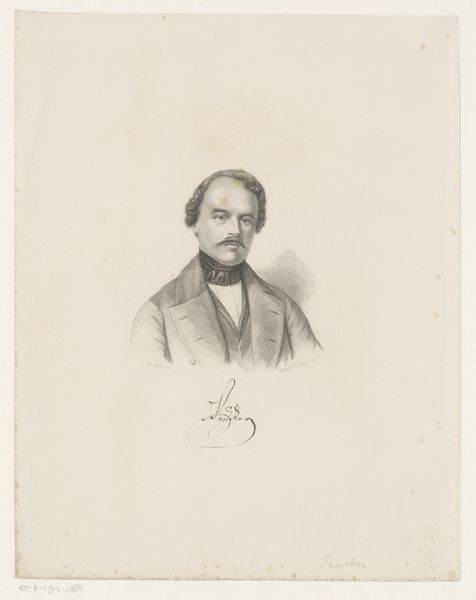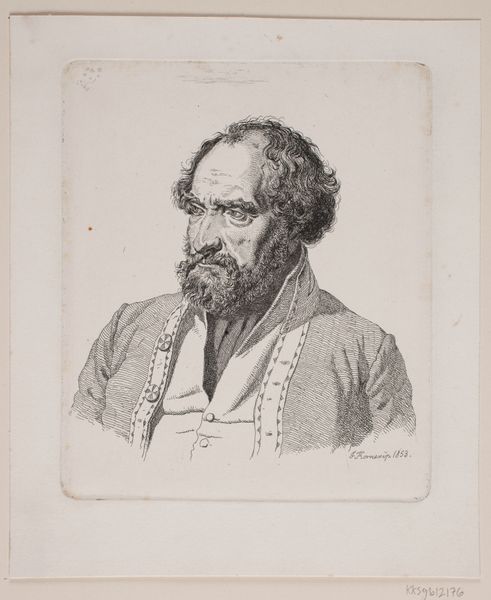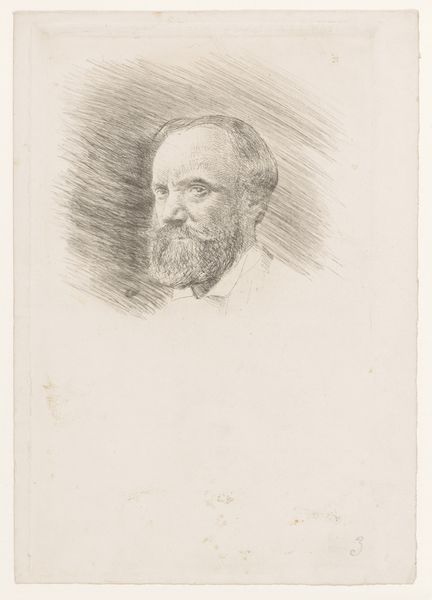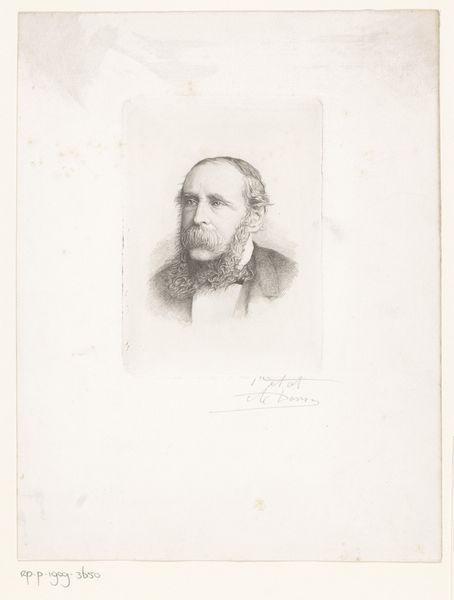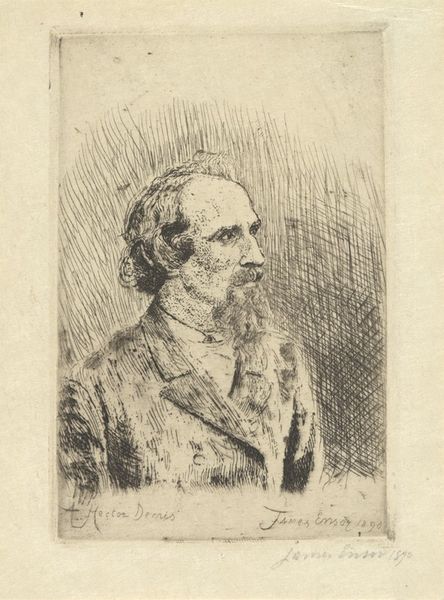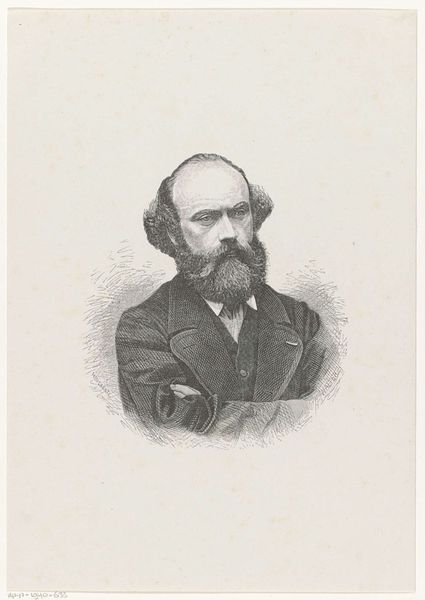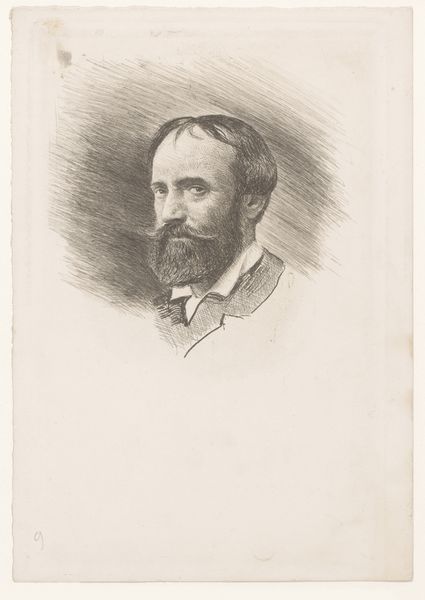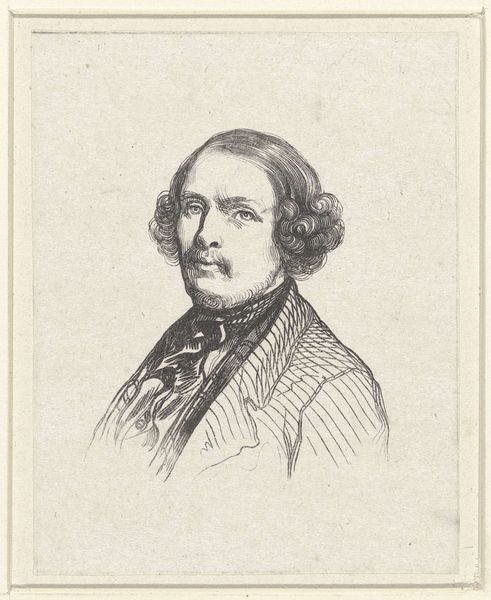
drawing, pencil
#
portrait
#
pencil drawn
#
drawing
#
amateur sketch
#
facial expression drawing
#
light pencil work
#
pencil sketch
#
personal sketchbook
#
portrait reference
#
pencil drawing
#
romanticism
#
pencil
#
portrait drawing
#
pencil work
#
academic-art
#
realism
Dimensions: height 170 mm, width 127 mm
Copyright: Rijks Museum: Open Domain
Curator: This is a portrait drawing of Ferdinand Berkmans, likely created sometime in the 19th century. What strikes you about it? Editor: It's quite delicate, isn't it? The light pencil work creates a soft, almost ethereal quality. And the gaze—direct, yet somehow melancholic. Curator: It’s fascinating how portraits of this era functioned within societal power structures. Commissioning and displaying such an image often reinforced the subject's status and legacy, cementing their position in society. In this instance, Ferdinand Berkmans identified himself on the portrait as 'architect'. Editor: Yes, the formal composition clearly echoes traditional portraiture. Note the use of hatching and cross-hatching to build form, typical academic drawing. It speaks to a solid understanding of anatomy and light. Yet there's a sense of immediacy in the sketch-like quality, a glimpse behind the conventional portrayal. Curator: I agree. Pencil drawings like these provided access. Compared to oil paintings, these portraits were faster and more approachable ways for professionals and other individuals to engage with and disseminate imagery during that time. They circulated as likenesses but also demonstrated social mobility, announcing aspirations of sophistication or academic prowess. Editor: Absolutely. Focusing on the figure, notice how the beard is more pronounced than the rest. A bold contrast and a way to lead our eyes. It also softens a more serious face; an element of approachable realism against an otherwise conventional portrayal. Curator: It’s interesting to consider how such portraits allowed for a degree of self-fashioning. Think of it as 19th-century LinkedIn! Editor: Indeed. By examining this drawing, one may decode aesthetic values but also the shifting visual and cultural environment of its era. Curator: This look into Ferdinand Berkman's life provides another lens into his aspirations, identity and social influence in the 1800s. Editor: The skill behind these simple tools evokes such an arresting mood; I keep discovering little aesthetic details that keep drawing my attention!
Comments
No comments
Be the first to comment and join the conversation on the ultimate creative platform.
